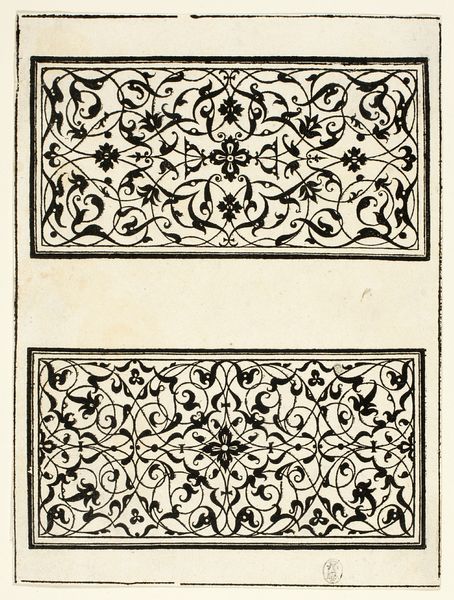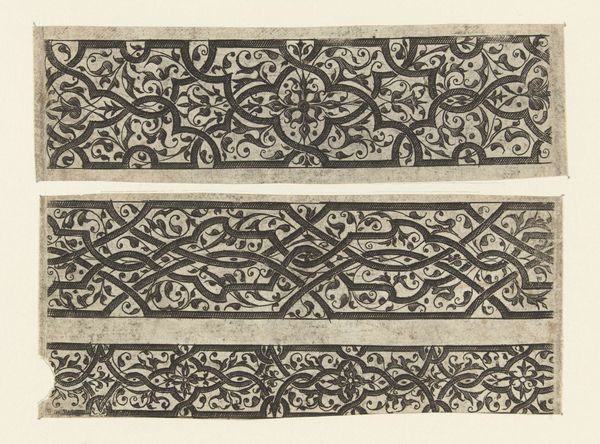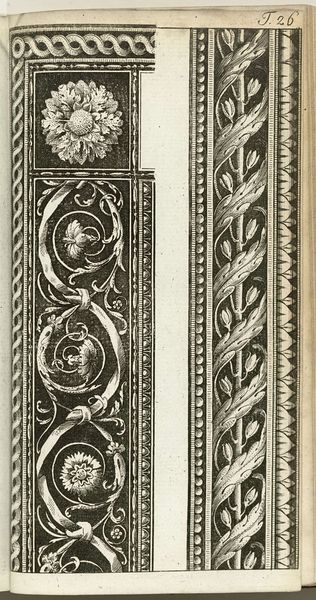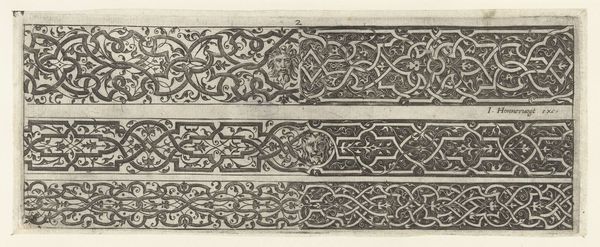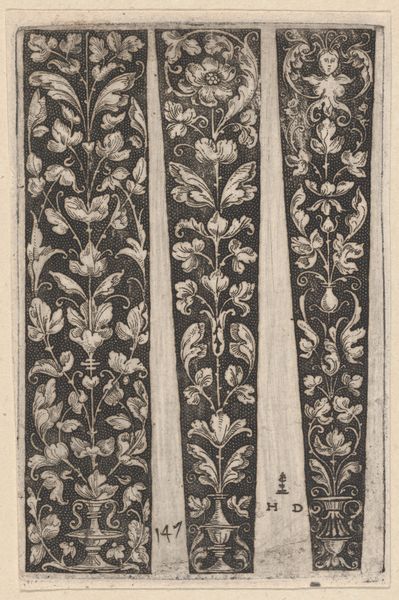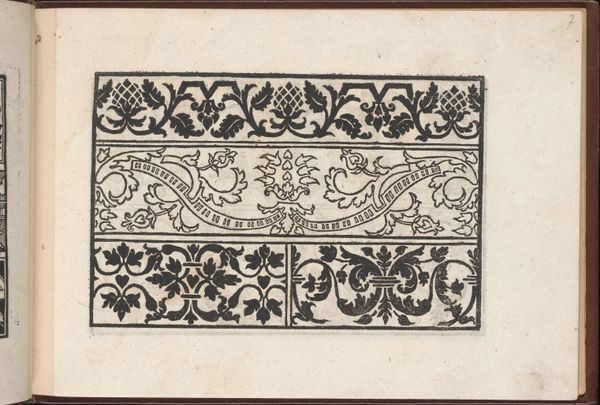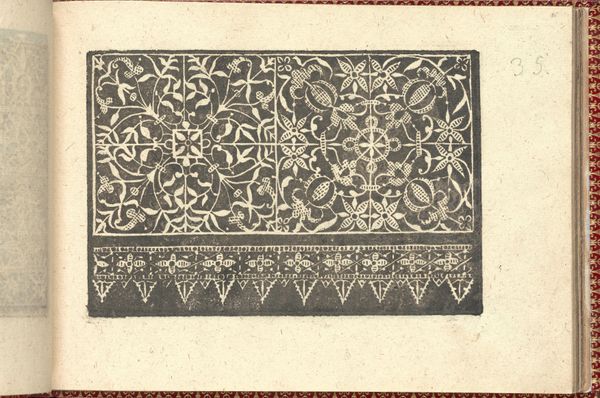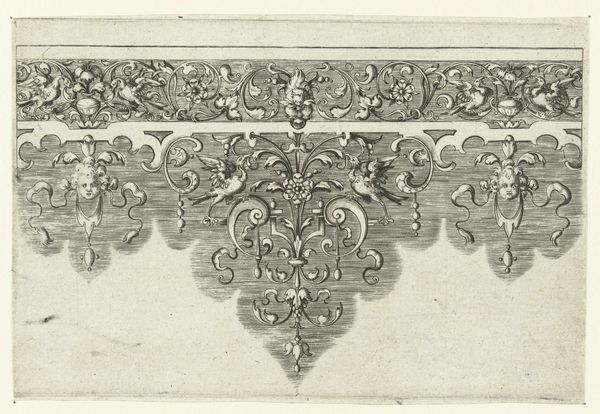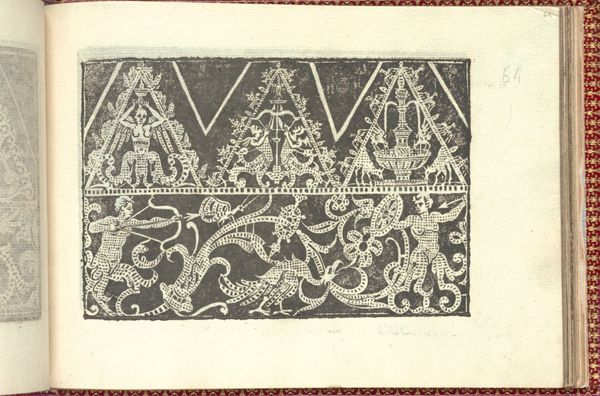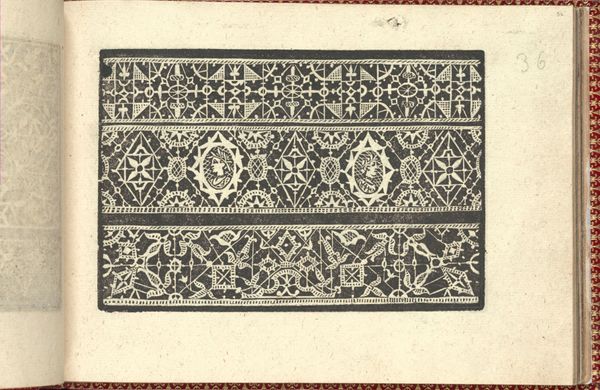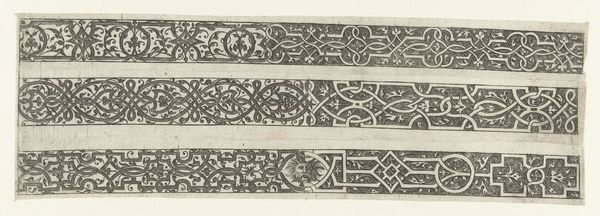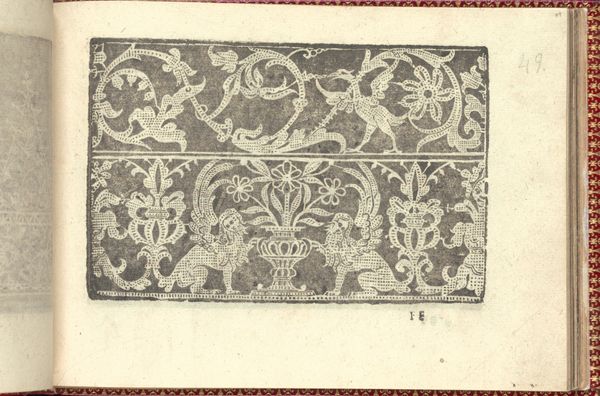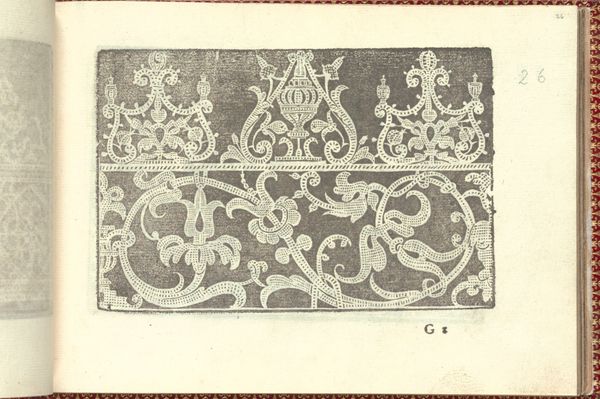
drawing, graphic-art, print, paper, pen
#
drawing
#
graphic-art
#
pen drawing
# print
#
pen illustration
#
paper
#
geometric
#
line
#
pen
#
decorative-art
Dimensions: 114 × 177 mm (sheet)
Copyright: Public Domain
Curator: Well, let’s take a closer look at these “Ornamental Panels” created by Hans Rudolf Manuel Deutsch. We aren't sure exactly when they were created, but they’re displayed at The Art Institute of Chicago. Editor: My first impression is that these panels feel very precise, almost architectural. The black ink against the aged paper creates a stark contrast. Curator: Precisely. These graphic pen drawings demonstrate a meticulous use of line. The repetitive, interwoven forms reflect the decorative styles popular during the Renaissance. Think of these less as standalone drawings and more as guides for artisans working in different mediums like metalwork or even textiles. Editor: So you’re saying this was a tool for production? It makes me think of labor practices, and artistic agency—especially where ornamentation is concerned. Were these artists seen as merely craftspeople implementing the designs of others? The intersection of art and craft gets blurred. And what was their cultural context, then? What socio-political landscape nurtured this detailed precision? Curator: Exactly! It reflects a period grappling with how the industrial revolution would impact artisanship. There was a nostalgia brewing. Also, while this style drew from Renaissance ornamentation, these panels themselves also point to a broader shift in understanding ornament; away from simple adornment to expressions of societal values. Editor: Ornament as resistance, ornament as compliance... Were these designs used in secular spaces, religious institutions, or perhaps a blend of both? The symbolism within these repeated motifs hints at layered meaning that the elites of the time would likely readily interpret. Curator: Absolutely. Understanding the power structures of the time and Deutsch’s positioning in Bern is crucial to dissecting this tension and broader questions of artistic intent. Editor: Looking at this again, there's almost a textile quality to the interwoven patterns. This reminds us of a longer history of the convergence between visual art, design, and other crafts such as fashion and embroidery. The modular structure provides endless variations. Curator: And remember, the patterns are carefully rendered with a pen in stark ink on paper; each one echoing, perhaps subtly contesting or supporting, the prevailing norms. It invites us to consider the dynamic play between design, craft and societal identity in the visual and material culture of their time. Editor: I hadn't considered their role in affirming or critiquing power through ornamental choices, I guess there’s more to it than mere surface decoration! Curator: There always is, especially if you’re asking the right questions.
Comments
No comments
Be the first to comment and join the conversation on the ultimate creative platform.
